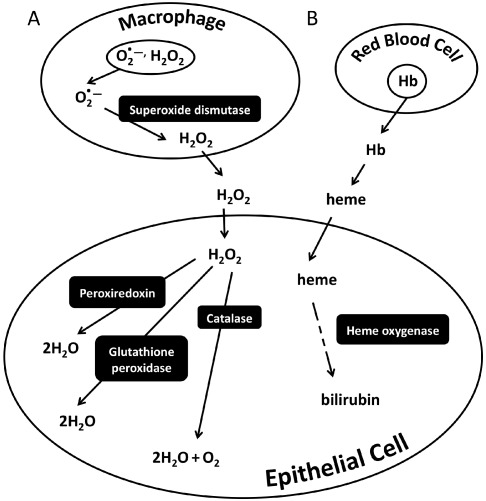Figure 1.
Summary of oxidative stress response pathways. (A) Macrophages and neutrophils are among the initial innate immune cells to respond to an injury. These cells generate respiratory bursts consisting of superoxide anions (O2−) and hydrogen peroxide (H2O2). Superoxide dismutase enzymes convert the superoxide anion to hydrogen peroxide. Hydrogen peroxide can pass out of the cell and into the interstitium, where it can enter neighboring cells and cause oxidative damage. In this example, epithelial cells have been exposed to hydrogen peroxide, resulting in a cellular oxidative stress response. Subsequently several antioxidant pathways are activated, including glutathione peroxidase, catalase, and peroxiredoxins. These enzymes allow the cell to prevent oxidative damage by breaking down the hydrogen peroxide to oxygen and water. (B) If an injury results in inflammation or hemorrhage, RBC are lysed, leading to the release of free hemoglobin (Hb) into the interstitium. Hemoglobin then is oxidized, leading to the release of free heme. Heme catalyzes free radical production through Fenton chemistry. Once heme enters a cell, the inducible enzyme heme oxygenase 1 converts the heme to bilirubin, a potent antioxidant.

